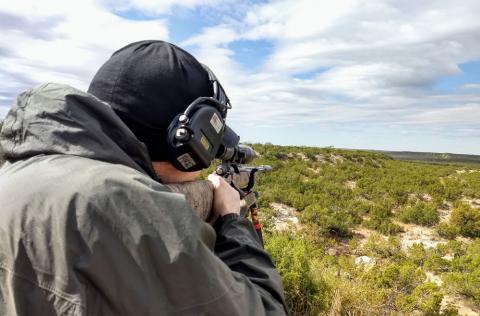Tes Randle Jolly

Historically, many introduced exotic species create ecological concerns. Not so with ring-necked pheasants (Phasianus colchicas). The popular game bird has thrived since its introduction from China in 1881 as a game bird. Judge Owen Nickerson Denny brought the first batch of 30 birds to Oregon. Ring-necked pheasants have become an iconic part of the American rural landscape. Their range has expanded to the point wildlife agencies manage them as they do any other native game bird.
With the exception of the hottest and most humid southeastern states, pheasants are present in many states and across Canada. They occur in a variety of habitats from sea level to 11,000 feet elevation. Pheasants are non-migratory and seasonally range from open country settings like agricultural fields, grassland prairies, pastures and hayfields to riparian areas, cattail wetlands and ditches and sloughs.
Pheasants weigh from 2-3 pounds. Their meat is prized as excellent table fare. Hens have drab brown and tan feathers and a lighter colored head. Cocks, or roosters, are named for their white neck ring. The rooster’s body plumage is a dazzling, iridescent array of gold, brown, green, purple and white feathers. The head has bluish-black and green feathers with a distinctive red wattle. Roosters have leg spurs that may be used in territorial conflicts. They crow loudly during spring and summer, especially at dawn and dusk.
Pheasants are mainly ground foragers but do feed in trees. They scratch with their feet but will use their bill to dig up to three inches deep for food. Their primary diet varies by season and location and includes insects, weed seeds, soybeans, corn and other crops. Additional food items include fruit seeds, leaves, berries, roots, worms, snails, lizards, snakes and field voles. Predators of adult birds include foxes, coyotes, owls and hawks.
Pheasants can be hunted across most of their range. Some of the best hunting is in North and South Dakota, Iowa, Minnesota, Kansas and Nebraska. Both private and public land hunting in these states can be phenomenal. There are few conservation concerns for pheasants. However, cold spring weather and untimely rains can affect nest success and chick survival. Bitterly cold winters can impact adult pheasant mortality if habitat and food are insufficient.
Overall, habitat loss is the biggest concern for pheasant populations. Modern farming practices degrade prime habitats in the U.S. by replacing small, diversified farms with large monocultures. Management strategies include providing adequate winter cover and spring nesting cover. Properties enrolled in the Conservation Reserve Program (CRP), funded by the Farm Bill, help conserve and restore optimal habitat for ring-necked pheasants. Pheasants Forever is dedicated to the conservation of pheasants, quail and other wildlife through habitat improvements, public awareness, education, land management policies and programs.
Did You Know…
- Pheasants have long pointed tail feathers that account for up to 20 inches of their body length.
- A group of pheasants can be called a brace, plump, trip, plume or bouquet.
- Pheasants can fly short distances but prefer to run. Speeds can reach up to 10 mph. When flushed, they cackle and burst to the sky and may achieve speeds exceeding 60 mph.
- In severe weather conditions, pheasants can go for up to two weeks without feeding by reducing their metabolism and energy needs.
- Hen pheasants are ground nesters and sometimes lay eggs in each other’s nets or in those of other birds. A hen’s clutch averages 12 eggs. Nesting success is generally 40-60%.
- Rooster pheasants establish and defend breeding territories in early spring while guarding a harem of 3-7 hens. Courtship includes erect wattles, strutting, running and wing and tail spreading. The rooster “tidbits” the hen by posing with his head lowered while calling her to a morsel of food.
- The average lifespan of wild pheasants is 1 to 3 years and 18 years in captivity.






























